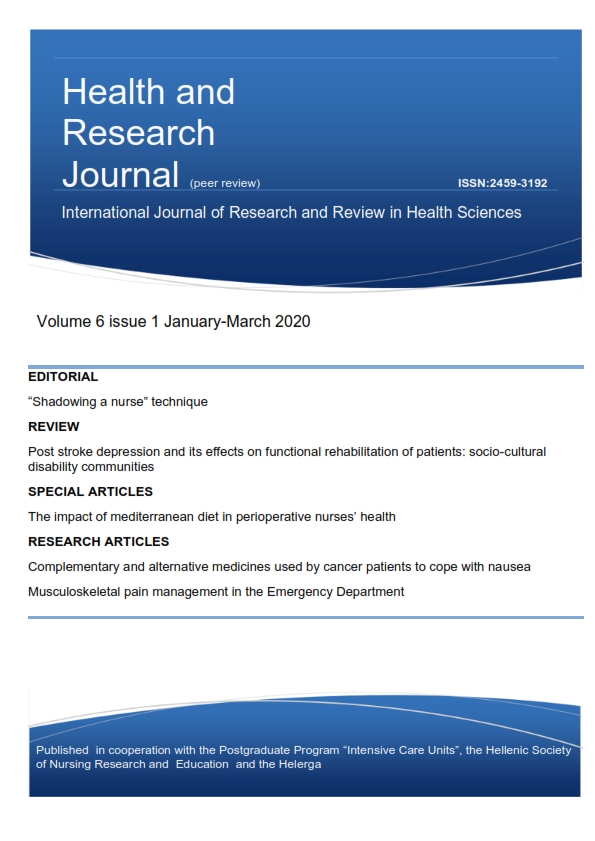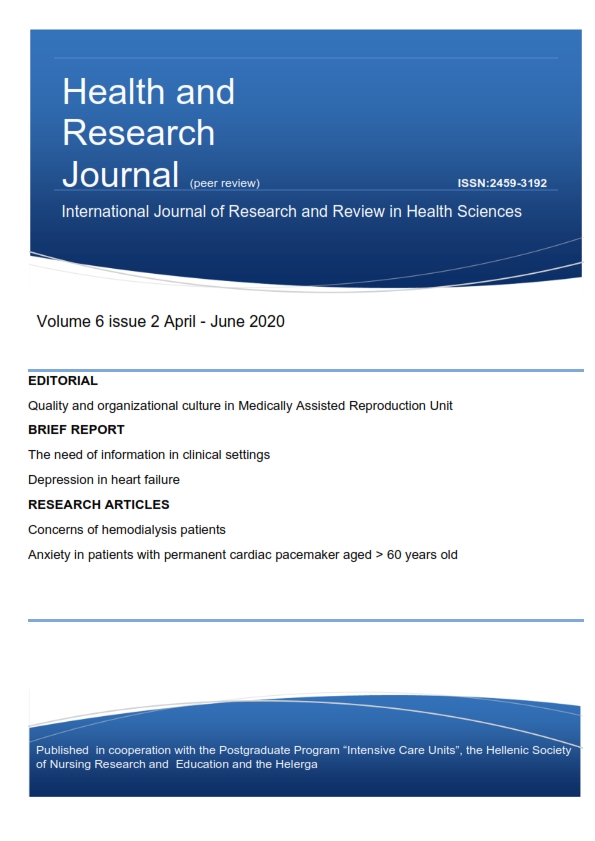The impact of mediterranean diet in perioperative nurses’ health

Abstract
Perioperative nurses are involved in the care of surgery patients, in a highly stressful environment with various risks. Unrealistic schedules and long working hours standing, and working shifts, make them more vulnerable to potential risks. Their health is affected by the quality of the work environment. Problems that may arise from the highly stressful work involve chronic stress, burnout, dissatisfaction, obesity and sleeping disorders. Nutritional problems result from the lack of time between shifts for food preparation, the extended time without food or liquid, reduced hydration, the irregular hours and times to eat, the less substantial meals and more caloric snacks. Mediterranean diet is a scientifically proven healthy diet, indicated for fighting obesity, heart disease and cancer. The consumption of fruit, vegetables, grains, nuts, and olive oil in the framework of Mediterranean diet which is rich in beneficial nutrients, could significantly improve perioperative nurses’ quality life, and their eating habits.
Article Details
- How to Cite
-
Agriopoulou, S., & Koutelekos, I. (2020). The impact of mediterranean diet in perioperative nurses’ health. Health & Research Journal, 6(1), 21–28. https://doi.org/10.12681/healthresj.22513
- Section
- Special Articles
Copyright notice:
The journal "Health and Research Journal" reserves the rights for copyright of the content of the website and also the copyright of the articles published.
By virtue of their appearance in this journal, the articles are free to be used for non-commercial purposes. However, the articles cannot and must not be used in anyway, published elsewhere or modified without any reference to the author and the first publication of the article.



